
NPS Photo Discover an Amazing Outdoor ClassroomThe environmental education program at Rocky Mountain National Park (RMNP) has been educating and inspiring students for 30 years. Set against the backdrop of 72 peaks that tower over 12,000 feet, RMNP is home to four distinct ecosystems, 12,000 years of human history, and over 1.7 billion years of geologic history. Taking students into the field provides them with real world examples of what they learn in the classroom. The educational programs at Rocky Mountain National Park provide hands-on field experiences that can support and enhance your learning objectives. Each program is based on real science, history and/or geography of the area. The dedicated environmental education staff at RMNP utilize the resources throughout the park to conduct standards-based education programs. These lessons and activities encourage students to engage, explore and experience the learning process. Field Trip ProgramsField trip programs are offered for grades K-12 from January through October. Many programs are offered seasonally. Most programs are limited to a maximum of 60 students per day. The following list of programs is a general selection of what is offered in the field. Programs vary in length and seasonal availability. Teaching materials and resources are offered prior to your program to help you prepare students for your visit. Field Trips for Kindergarten - 2nd Grades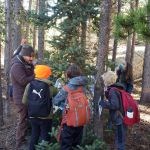
NPS Photo Adapted for the Weather (3rd grade)Students examine the role that weather plays in the lives of plants and animals in RMNP. Students learn about the different types of weather and discover how plants and animals survive in this dynamic climate. Available in summer and fall. This is a field trip that typically occurs at Sprague Lake. Ideal for 3rd grade field trips, adaptable to adjacent grade levels. This is a stations field trip, where groups of students rotate between content stations. Schedule a field trip. Field Trip Objectives: The students will...
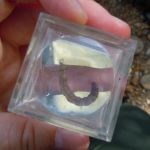
NPS Photo Community Components (2nd grade)Students explore an ecological community to discover the living and non-living members within it. The students collect and identify invertebrates, explore a forest, and determine the role that weather plays in the community. Available in fall, spring and summer. This field trip typically occurs at Lily Lake. Ideal for 2nd grade or adjacent grade levels. This is a stations field trip, where groups of students rotate between content stations. Schedule a field trip.
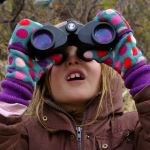
NPS Photo Nature Explorers Hike (K-3rd)Students use their senses to detect what plants and animals live in Rocky Mountain National Park. Look for evidence by the water, in the trees, and on/in the ground. Available in fall, summer and spring. Field trip typically occurs in Upper Beaver Meadows. This is a great first field experience at RMNP. Standards connections cover K-3rd grades. Schedule a field trip.
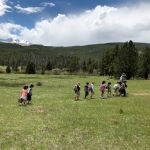
NPS Photo At Home in the Rocks (1st grade)Students inspect the rocky habitat that is home to many plants and animals in Rocky Mountain National Park. The students will investigate rocks, animal homes, and plants that live among the rocks. Available in fall, spring and summer. Typically occurs near Cub Lake Trailhead. Created for 1st grade standards, adaptable to adjacent grade levels.This is a stations field trip, where groups of students rotate between content stations. Schedule a field trip.
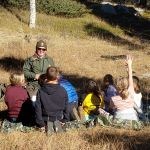
NPS Photo Sounds of Rocky (1st grade)Every place has its own special sound and every place’s sound is different. We can use our ears to explore RMNP by discovering its sounds. Listen to the sounds of nature and learn how animals use sound to communicate. Foxes, owls, bats, mountain lions, snakes and all the other creatures use sound every day. Available in fall, spring and summer. This field trip typically occurs at Hidden Valley, and is designed to cover 1st grade standards. Schedule a field trip.
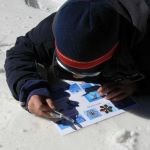
NPS Photo Winter Detectives (K-2nd grades)Students become winter detectives and search for clues to solve mysteries. Students look for tracks and other evidence of animals, explore which animals make their home in the snow, and discover the subnivean (beneath the snow) world. Available at Bear Lake in winter (typically January - March.) Field trip size is limited to 30 students/day. Snowshoes are provided at no cost, courtesy of Rocky Mountain Conservancy. Schedule a field trip.
Field Trips for 3rd-5th Grades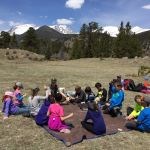
NPS Photo Story of the Mountains (4th grade)Students learn that every rock has a story, and the shapes of the landscapes hold the clues to how that place has changed over time. Content covers the rock cycle, mountain building, and glaciation. Available in spring, summer and fall, and typically takes place at Moraine Park Discovery Center. This field trip was designed to address 4th grade standards, but also adapts well to adjacent grades. Schedule a field trip.
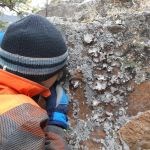
NPS Photo Great Ecosystem Adventure (4th-5th grades)An ecosystem is more than just a pretty view, each ecosystem is home to a unique community of plants and animals and weather. Students navigate through an ecosystem by solving clues to unlock GPS coordinates. At each stop, students learn more about the ecosystem by gathering clues and completing an adventure log. Available in fall, spring and summer, and typically takes place in Upper Beaver Meadows. Schedule a field trip.
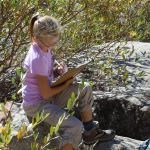
NPS Photo Trip Back in Time (4th grade)Tribal values, settler history and preservationist exploration! Students travel back in time to the 1700s, 1800s, and 1900s to discover some of the people that helped make Rocky Mountain National Park the place it is today. Available in fall, spring and summer. Schedule a field trip.
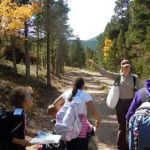
NPS photo Mapping Our World (5th grade)Students explore how maps can be used to record, collect, and share information about our world. This program incorporates the use of topographical maps, compasses, and GPS technology at Lily Lake. Available in fall, spring and summer. This field trip is designed to address geography standards of 5th grade but can be adapted to adjacent grades. Schedule a field trip.
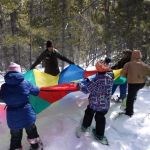
NPS Photo Winter Explorers (3rd-4th grades)Each year the Rocky Mountains are blanketed in snow that brings new life, homes, and challenges for the animals of RMNP. This winter world also creates new opportunities for humans to play in and explore. Students become explorers and uncover the importance of snow in the subalpine environment. Students discover the challenges animals face, and their adaptations to survive the harsh winter by following animal tracks, searching under the snow and presenting this information to their peers. Available only in winter (typically January - March.) This field trip typically occurs at Bear Lake. Field trip size is limited to 30 students/day. Snowshoes are provided at no cost, courtesy of Rocky Mountain Conservancy. Schedule a field trip.
|
Last updated: August 19, 2025
